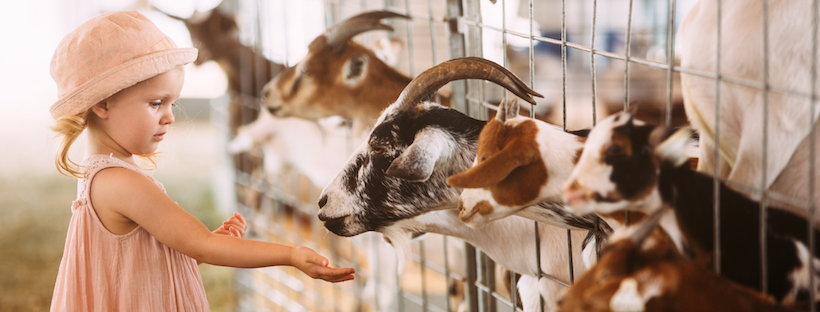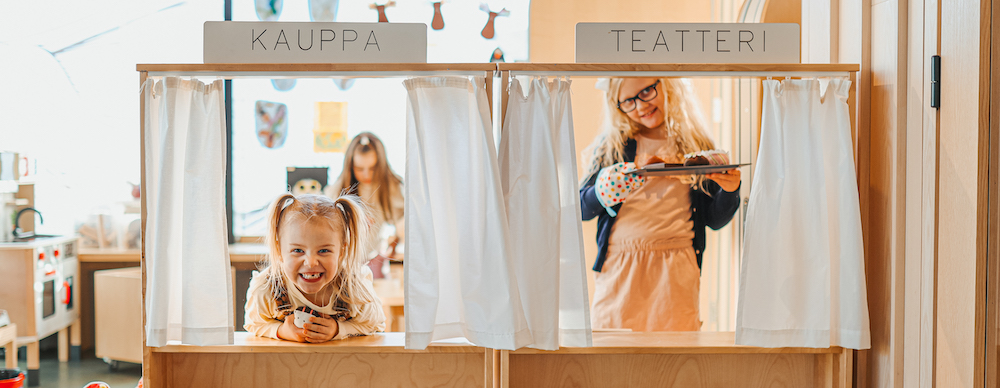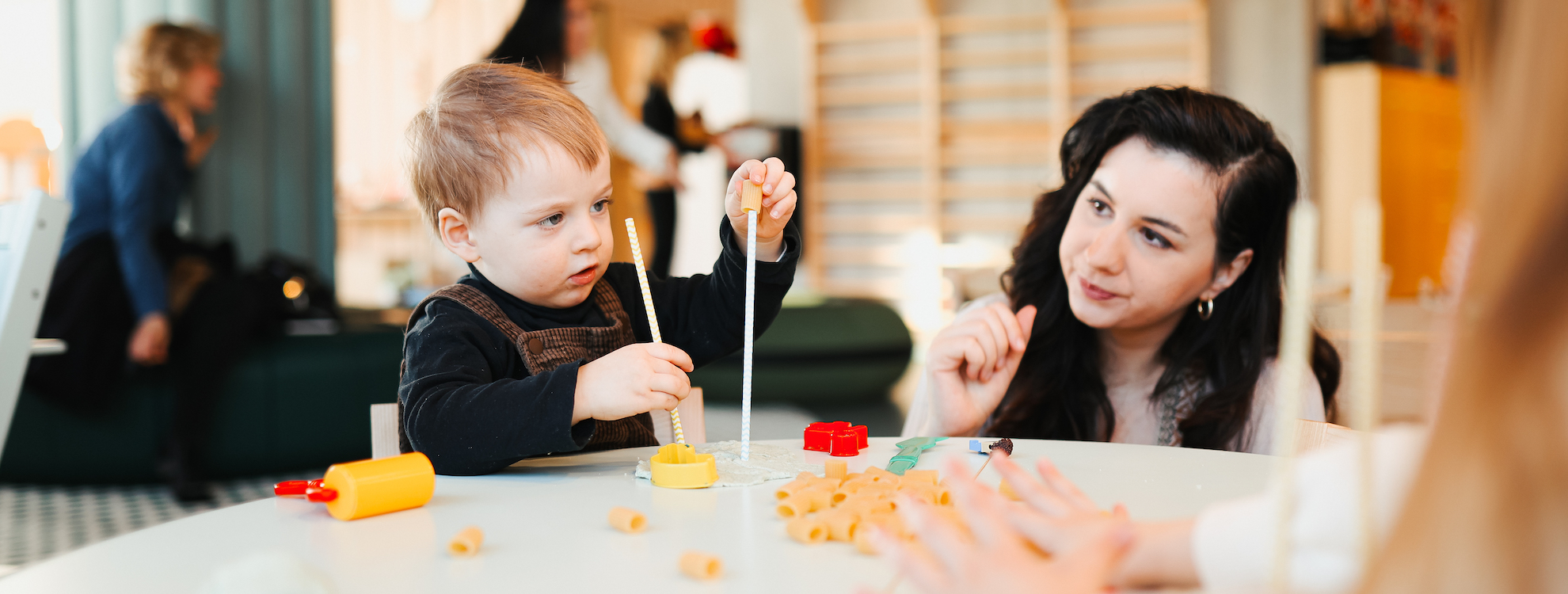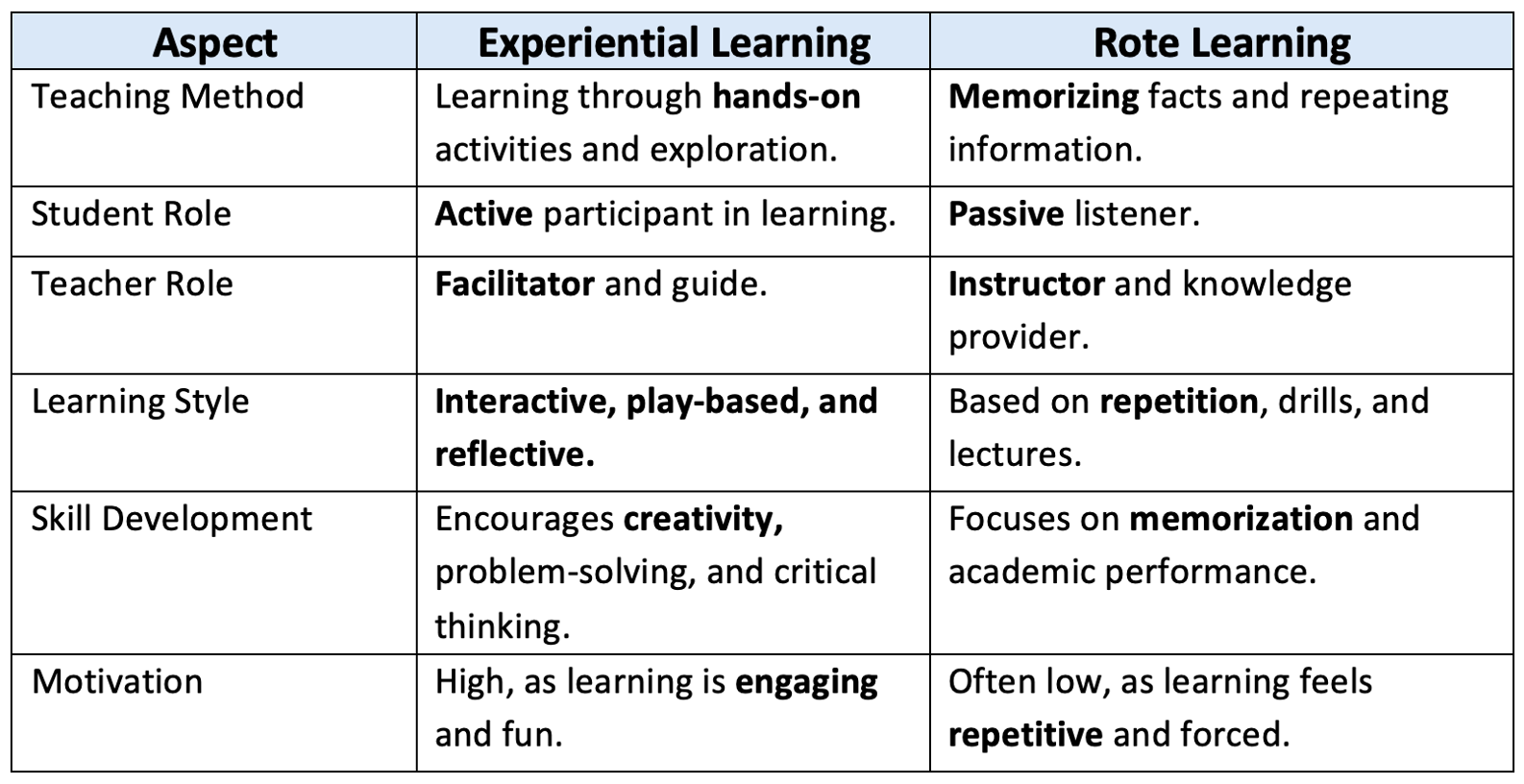1. Children Learn Best by Doing
Young children are naturally curious. They learn best when they can see, touch, and experience new concepts firsthand rather than simply memorizing facts from a book. Experiential learning aligns with the way the brain develops in early childhood—it promotes active engagement, which helps children form stronger neural connections and retain knowledge more effectively.
For example, instead of memorizing the names of animals from a textbook, children in an experiential learning environment might visit a mini farm, engage in role-play as different animals, or use sensory play to understand textures, sounds, and movements. This active participation makes learning fun and memorable.

2. Experiential Learning Builds Critical Thinking and Problem-Solving Skills
Rote learning often focuses on right or wrong answers, leaving little room for creativity or exploration. In contrast, experiential learning encourages open-ended questions and real-world problem-solving.
For example, a teacher could present a simple challenge: "How can we build the tallest tower using only paper and glue?" Children would then experiment with different structures, make mistakes, and learn from their experiences. This process strengthens logical reasoning, creativity, and persistence—essential for lifelong learning.
3. Play-Based Learning Improves Social and Emotional Development
Many traditional preschools emphasize individual performance—children are evaluated based on their ability to recall and reproduce information. However, early childhood is also critical for social and emotional development. Experiential learning fosters collaboration, communication, and empathy by encouraging children to work together on activities like:
- Group storytelling sessions
- Role-playing everyday situations (e.g., a visit to the market)
- Problem-solving tasks that require teamwork
When children engage in play-based learning, they learn how to express emotions, negotiate with peers, and handle conflicts—skills that are just as important as academic knowledge.
4. Experiential Learning Boosts Engagement and Motivation
When learning feels like a chore, children may lose interest. Traditional rote learning methods often make children feel pressured to perform, leading to anxiety and disengagement. Experiential learning, on the other hand, turns learning into an adventure where every discovery brings excitement.
For example, instead of teaching numbers through worksheets, a preschool could organize a "market day" where children role-play as shopkeepers and customers. As they count money and measure goods, they naturally absorb mathematical concepts in a fun and relevant way.

Research has shown that children who learn through active experiences are more motivated, curious, and excited to explore new ideas. This love for learning lays the foundation for long-term academic success.
What is Experiential Learning?
Experiential learning is a hands-on, active learning approach where children gain knowledge and skills through direct experience, exploration, and reflection rather than passive listening or rote memorization. Instead of simply receiving information from teachers, children engage in activities that require them to think, experiment, and apply their knowledge in real-world contexts.
This approach is based on the idea that learning happens most effectively when children:
- Experience something new firsthand.
- Reflect on what they did and observed.
- Apply what they have learned in different situations.
Experiential learning is fundamental in early childhood education because young children naturally learn through play and exploration. By integrating these natural tendencies into structured learning experiences, preschools can create an engaging and meaningful curriculum that builds a strong foundation for future learning.

Key Characteristics of Experiential Learning
Active Participation
- Children are actively involved in learning rather than just listening or repeating information.
- Example: Instead of simply hearing about different seasons, children observe seasonal changes outdoors, collect leaves, and create artwork based on what they see.
Hands-On Exploration
- Learning involves touching, moving, building, and experimenting to understand new concepts.
- Example: Instead of learning numbers through repetition, children count real objects, play with counting beads, or use a digital learning tool to interact with numbers.
Real-World Relevance
- Learning is connected to real-life experiences, so children see its importance and application.
- Example: Children role-play as pedestrians and drivers using a miniature road setup in class instead of teaching traffic rules from a book.
Encourages Curiosity and Problem-Solving
- Children are encouraged to ask questions, explore different solutions, and make discoveries on their own.
- Example: Instead of explaining how plants grow, teachers provide seeds, soil, and water and let children observe and record how plants develop over time.
Reflection as Part of Learning
- After an activity, children are encouraged to think about what they did, what they learned, and how to apply it in different situations.
- Example: After a storytelling session, teachers ask, "What would you do if you were the main character?" to encourage deeper thinking.
Examples of Experiential Learning in Preschool
📌 Science & Nature Exploration
- Sensory play (e.g., touching sand, water, leaves) to understand different materials.
- Simple experiments like mixing colors or making bubbles to explore scientific concepts.
📌 Language & Communication Skills
- Storytelling with puppets to develop language and expression.
- Interactive discussions and show-and-tell to build confidence in speaking.
📌 Mathematics Through Play
- Counting real objects, like toys or fruits, instead of memorizing numbers.
- Sorting and classifying objects based on size, color, and shape.
📌 Social-Emotional Learning
- Role-playing everyday situations (e.g., shopping, family roles) to learn social interactions.
- Group games and collaborative projects to develop teamwork and empathy.
📌 Motor Skill Development
- Activities like climbing, balancing, drawing, and cutting to improve fine and gross motor skills.
- Outdoor play and movement-based learning to keep children active and engaged.

Final Thoughts on Experiential Learning
Preschoolers can move beyond traditional rote methods by embracing experiential learning and creating a more engaging, effective, and joyful learning experience. Children develop a love for learning, become more confident in their abilities, and acquire essential life skills that go beyond textbooks.
As we progress, Academic Coordinators in preschools play a critical role in designing and implementing an experiential learning environment. The next step is understanding how to transition from conventional teaching methods to experiential learning—a process that requires teacher training, curriculum redesign, and a supportive learning environment.
Next Steps
Our next blog will discuss "How to Implement Experiential Learning in Your Preschool The Finnish Way."
Schedule a free consultation call!
You can schedule a free consultation call with our CEO, Milla van der Burgh, to explore how Kindiedays can help you deliver high-quality, cost-effective, and scalable education solutions.

Schedule a free consultative call with Milla
I look forward to hearing from you.
.png)